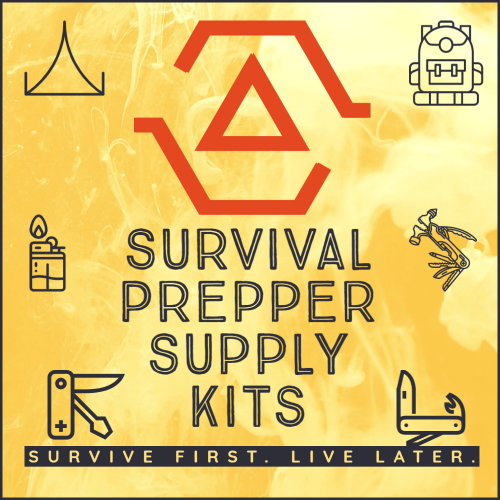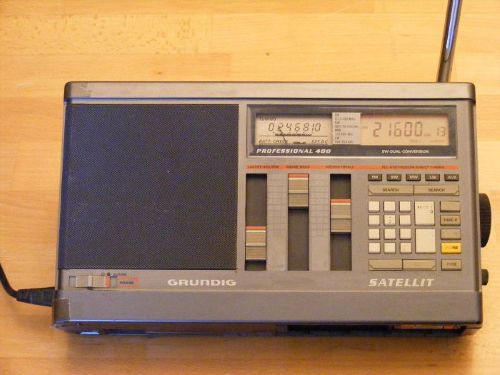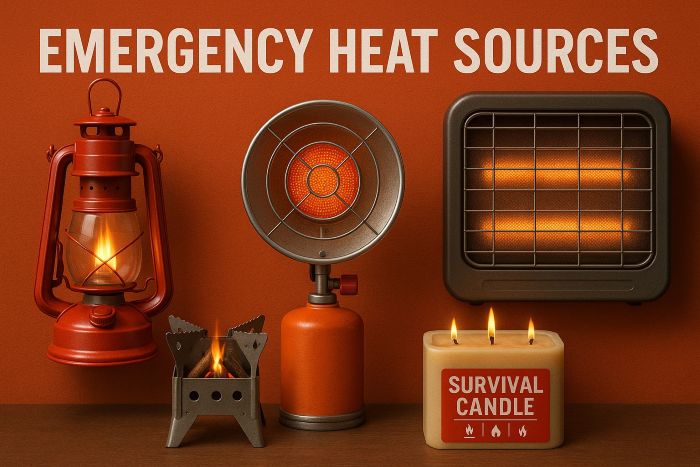Shortwave or Ham radios are one of the most reliable tools for long-distance communication, especially in a crisis where the internet, phones, and other modern infrastructure have failed. Unlike local VHF and UHF radio signals, which rely on line-of-sight transmission, shortwave frequencies bounce off the ionosphere, allowing communication over hundreds or even thousands of miles.
This ability to reach beyond the horizon creates shortwave radios essential for survival, intelligence gathering, and staying connected when all other forms of communication are compromised.
My husband has been using and fixing old radios and short-wave radios for quite a while. He has his ham radio license and speaks with people worldwide. He used to have a large HAM radio setup and would spend hours doing contests, talking to people. He would speak his call-sign to make the connection and get a postal address to send a postcard. He collected postcards from people he would connect with. He won a lot of contests by connecting with a ton of fellow ‘Hamsters’. He just has a handheld Ham radio now.
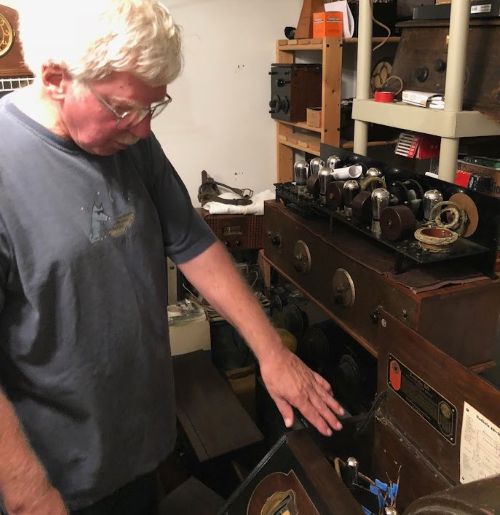
Understanding frequency selection and propagation conditions is key to using shortwave radio effectively. Shortwave bands operate between 1.6 MHz and 30 MHz, but not all frequencies perform equally at all times.
The ionosphere changes throughout the day due to solar radiation, meaning that higher frequencies (15-30 MHz) work better during the day, while lower frequencies (3-10 MHz) are more effective at night. If trying to reach a specific location, experimenting with different frequencies based on the time of day is necessary to find the best signal path.
Tuning into the correct frequencies requires knowing which bands are active. Many shortwave radios have a built-in frequency guide, but real-time band conditions can change due to weather, solar activity, or interference.
Monitoring official government broadcasts, amateur radio networks, and emergency frequencies provides access to critical news, weather reports, and disaster updates. Keeping a logbook of active frequencies helps track reliable channels for future communication.
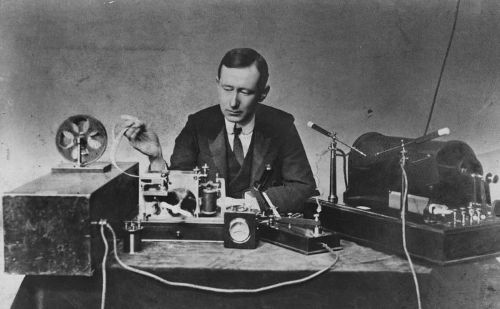
Selecting the right radio is essential. Some shortwave radios are designed for receiving only, allowing users to listen to broadcasts but not transmit. Others, such as amateur HF transceivers, offer two-way communication.
If using shortwave for survival or emergency coordination, a transceiver with multiple band coverage and adjustable power output is the best choice. Battery-operated or crank-powered models ensure functionality even when power grids fail.
Antenna setup plays a crucial role in signal strength and transmission range. Standard built-in antennas on portable radios may work for listening to strong stations. Still, an external long-wire, dipole, or loop antenna is needed for long-distance reception and transmission.
Running a simple wire antenna between two trees or buildings significantly improves reception. For transmitting, directional antennas like Yagi or NVIS (Near Vertical Incidence Skywave) setups enhance communication to specific areas.
Single sideband (SSB) mode on a shortwave radio allows clearer voice transmission over long distances while conserving power. Many emergency broadcasts and amateur radio operators use USB (Upper Sideband) above 10 MHz and LSB (Lower Sideband) below 10 MHz. Knowing how to switch between modes ensures compatibility with different networks.
Power supply is a significant factor in long-term shortwave use. Radios with internal batteries, solar charging options, hand-crank generators, or vehicle power adapters provide backup options when grid power is unavailable. Carrying spare batteries, rechargeable packs, or a deep-cycle battery with an inverter extends operational capability in extended crises.
Shortwave radios are most effective when paired with prearranged schedules and frequencies. If coordinating with a group over long distances, setting up a window for transmission, such as tuning in at a specific time each day on a preselected frequency, ensures messages are received even when conditions make continuous monitoring impossible.
Emergency networks like the Amateur Radio Emergency Service (ARES), Military Auxiliary Radio System (MARS), and shortwave news broadcasters provide additional sources of information.
Understanding interference and noise reduction improves communication quality. Urban environments, power lines, and electronic devices generate radio noise that can weaken signals.

Moving away from electromagnetic interference sources, grounding the antenna properly, and using noise filters can help eliminate background static. Positioning a loop antenna indoors or using a ferrite core to suppress noise can improve signal clarity in extreme conditions.
Shortwave radio provides a powerful tool for intelligence gathering in a crisis. Governments, military forces, and underground networks often use coded or encrypted messages over shortwave bands, especially during wartime or disasters.
Learning Morse code (CW mode – Continuous Mode), number station decoding, or digital mode transmission allows access to a wider range of communications. Software-defined radios (SDRs) and computer decoders can help analyze complex transmissions.
Maintaining radio discipline and security is critical for two-way communication. Unlike encrypted military channels, shortwave transmissions are public and can be intercepted.
Using coded language, frequency hopping, and low-power transmissions minimizes detection risk. Tuning to an agreed-upon frequency at prearranged times, transmitting briefly, and then switching frequencies reduces the likelihood of being triangulated by unwanted listeners.
Shortwave radio remains one of the most resilient forms of communication in a crisis. Whether for long-distance coordination, gathering intelligence, or accessing emergency broadcasts, a well-maintained shortwave setup provides vital connectivity when modern systems collapse.
Those who learn how to properly select frequencies, optimize antenna performance, and secure power sources will always have an advantage in maintaining communication under extreme conditions.
Using Ham Radio to Stay Connected in a Crisis
When traditional communication systems fail during a crisis, ham radio becomes one of the most reliable ways to stay connected. Unlike cell phones and the internet, which depend on vulnerable infrastructure, ham radio operates independently using radio waves.
This allows communication over short or long distances, depending on the equipment, frequency, and atmospheric conditions. In a survival scenario, it can provide critical information, coordinate rescue efforts, and maintain contact with others when no other means are available.
The first step in using ham radio effectively in a crisis is understanding the basic types of equipment. Handheld transceivers, also known as HTs or “walkie-talkies”, are compact, battery-powered radios ideal for local communication.
Mobile radios, typically mounted in vehicles or set up with external power sources, offer increased range. Base stations, which use larger antennas and higher power output, provide the greatest communication distance and reliability. Having multiple types of radios ensures redundancy, allowing you to communicate in different scenarios.
Ham radio operates on specific frequency bands, which are divided into VHF (Very High Frequency) and UHF (Ultra High Frequency) for local communication, and HF (High Frequency) for long-distance transmission.
VHF and UHF work best for line-of-sight communication within a few miles, making them ideal for local coordination. HF bands allow for regional or even global communication by bouncing signals off the ionosphere, which is crucial when reaching emergency networks or distant contacts.
Power sources become a limiting factor in a crisis, so it’s essential to ensure multiple ways to keep your radio running.
- Rechargeable batteries,
- solar panels,
- hand-crank generators,
- and deep-cycle batteries provide backup power when the electrical grid is down.
A stockpile of charged battery packs, a solar charging setup, or a vehicle-based power supply ensures that communication can continue for extended periods. One of the most effective ways to extend ham radio range is through repeaters, which are automated stations that receive and retransmit signals over a larger area.
Repeaters, often located on mountaintops or tall buildings, allow users with handheld radios to communicate across entire cities or regions. Knowing the frequencies of local repeaters before a crisis occurs is critical, as they can provide a lifeline when direct communication fails.
When my husband first began using his ham radio, and cell phones weren’t available yet, he would call me from his boat on his radio using a repeater. It’s not private, so anyone on that frequency can hear what you say. We thought that was so cool. A couple of years later, cell phones emerged on the horizon.
HF radio is the most effective tool for long-distance communication. These radios operate on lower frequency bands, allowing signals to travel hundreds or thousands of miles by reflecting off the ionosphere.
Understanding how propagation changes with time and weather is essential, as some frequencies work best during the day while others perform better at night. Using lower bands like 80m and 40m for nighttime communication and higher bands like 20m and 10m during the day maximizes reach.
Tuning into emergency frequencies and nets provides access to critical information. Many ham radio networks operate dedicated emergency communication channels, known as “nets,” which broadcast updates, coordinate aid, and relay messages.
Organizations like ARES (Amateur Radio Emergency Service) and RACES (Radio Amateur Civil Emergency Service) maintain structured networks for disaster situations. Monitoring these frequencies ensures you stay informed about unfolding events, evacuation orders, and available resources.
Operating a ham radio requires a license in most countries, but legal restrictions are often relaxed during true emergencies. Having at least a Technician-class license before a crisis ensures that you understand radio operation, frequency use, and basic troubleshooting.
Studying radio protocols, including emergency calling procedures, Q codes, and phonetic alphabets, helps streamline communication under stress. Encryption is generally not allowed on ham radio, meaning that all transmissions are public.
This means maintaining operational security by limiting sensitive information over open frequencies in a survival situation.
- Using prearranged code words,
- switching frequencies periodically,
- and using simplex (direct) communication rather than repeaters reduces the risk of interception.
Having multiple backup frequencies known only to trusted individuals ensures that communication can continue elsewhere if one channel is compromised.
Improvised antennas can improve signal quality in a crisis. Long-wire antennas, dipole antennas, and directional Yagi antennas allow better performance when standard gear is unavailable.
Even a simple wire strung between trees can significantly increase transmission range when using HF bands. In urban environments, positioning antennas on rooftops or balconies enhances signal strength and reduces interference. We have a giant antenna in our backyard.
Monitoring government broadcasts, shortwave radio, and weather stations provides additional intelligence. Many NOAA weather stations, military broadcasts, and international news services continue to operate even when local infrastructure collapses.
A multi-band radio capable of receiving shortwave (SW) and weather frequencies ensures access to external reports when local communication fails.
Ham radio is most effective when practiced regularly. Running drills, testing equipment, and joining local ham radio groups ensures that you know how to operate efficiently when disaster strikes.
- Pre-programming frequencies,
- having emergency contact lists,
- and maintaining updated maps of repeater locations allow for faster response when every second counts.
Communication is often the first system to collapse in a large-scale crisis. Phones stop working, the internet goes down, and people are left without critical information.
Those who understand how to use ham radio, maintain power sources, and connect with emergency networks will have a significant survival advantage. When all other lines of communication fail, ham radio remains a lifeline, providing the ability to call for help, coordinate with others, and stay informed in the most chaotic situations.
Do you use a short-wave or HAM radio? How do you use it? Do you know how to communicate with Morse code? Are you licensed and have a call sign? It’s something I will do in the near future. Please reply in the comments below. I’d love to hear your thoughts.
